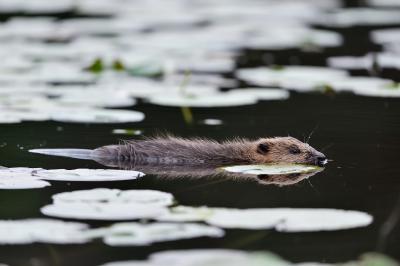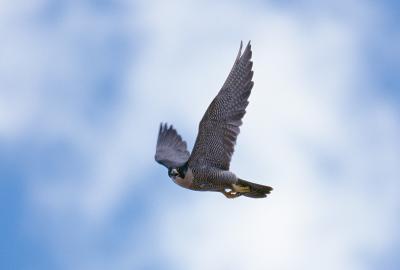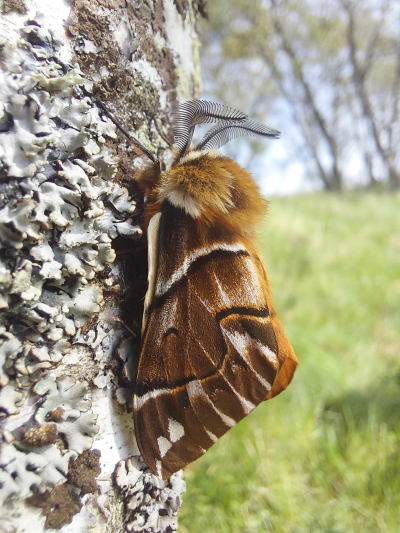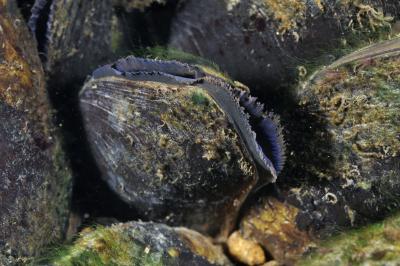Aspen hoverfly
Hammerschmidtia ferruginea
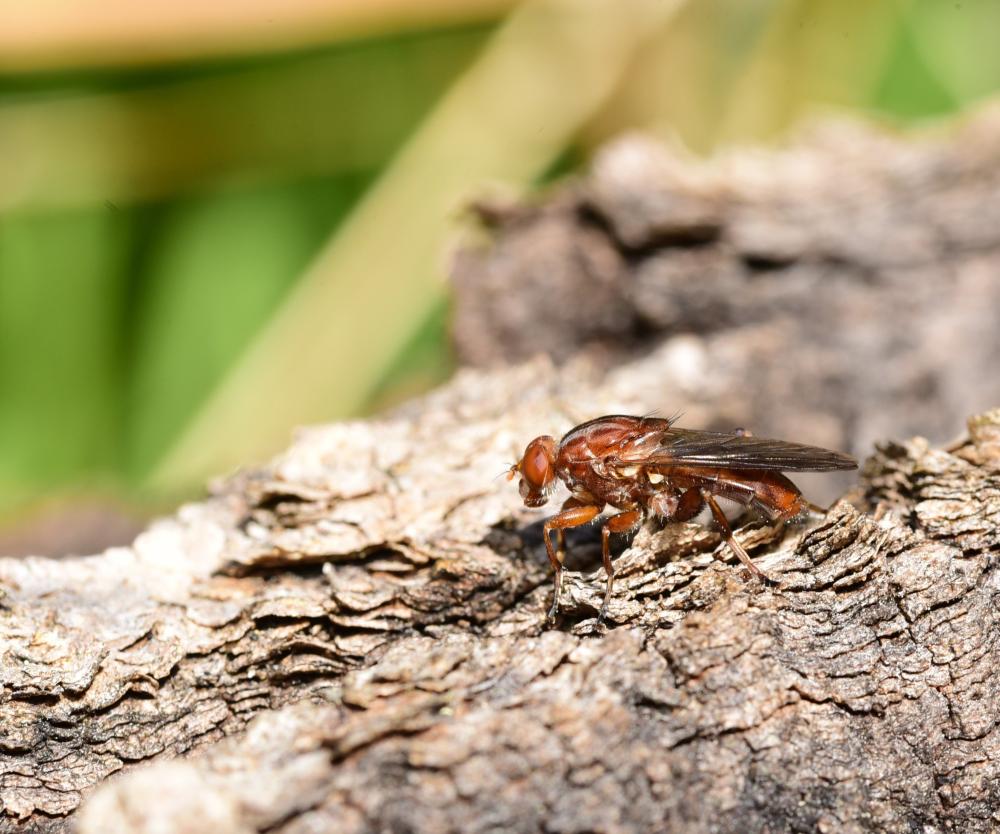
The aspen hoverfly is a member of the Diptera (true flies), which also includes houseflies, mosquitoes and crane flies. Found only in sites in the Scottish Highlands within the UK, it’s one of our rarest hoverflies.
Factsheet
Lifespan: As adults, a maximum of 32 days for males, 51 days for females. The full lifespan is usually 12 - 14 months but can be two years, mainly spent in the larval stage.
Best time to spot: May and June
Aspen hoverflies stand out from the crowd: most other hoverflies have a starkly stripey or spotted appearance, sometimes with a dense covering of hair, but the aspen species has neither. Instead, this small creature, measuring 10 to 12mm in length, is entirely orange-brown, almost amber in colour.
Like most insects, they have three body parts (head, thorax and abdomen) and six legs. Unlike bees and wasps, which have two pairs of wings, the aspen hoverfly is a true fly, meaning they only have one pair.
Adults fly between May and June and are most active on warm, dry days. Certain flowers give them a buzz, including bird cherry, hawthorn, pignut, wild roses and rowan.
Aptly named, aspen hoverflies are one of the many fly species dependent on aspen trees. Specifically, they require the dead wood of this tree. They lay their eggs in the wet and rotting cambium (the layer of wood beneath the bark), which provides a satisfying soup of bacteria for the larvae to feed on. Such conditions only last a few years on one tree, however, so they rely on continuity of habitat (ie a large reserve of freshly fallen large aspen trees).
Did you know?
The aspen hoverfly is a member of the Diptera (true flies), which also includes houseflies, mosquitoes and crane flies. Found only in sites in the Scottish Highlands within the UK, it’s one of our rarest hoverflies.
Factsheet
Lifespan: As adults, a maximum of 32 days for males, 51 days for females. The full lifespan is usually 12 - 14 months but can be two years, mainly spent in the larval stage.
Best time to spot: May and June
Aspen hoverflies stand out from the crowd: most other hoverflies have a starkly stripey or spotted appearance, sometimes with a dense covering of hair, but the aspen species has neither. Instead, this small creature, measuring 10 to 12mm in length, is entirely orange-brown, almost amber in colour.
Like most insects, they have three body parts (head, thorax and abdomen) and six legs. Unlike bees and wasps, which have two pairs of wings, the aspen hoverfly is a true fly, meaning they only have one pair.
Adults fly between May and June and are most active on warm, dry days. Certain flowers give them a buzz, including bird cherry, hawthorn, pignut, wild roses and rowan.
Aptly named, aspen hoverflies are one of the many fly species dependent on aspen trees. Specifically, they require the dead wood of this tree. They lay their eggs in the wet and rotting cambium (the layer of wood beneath the bark), which provides a satisfying soup of bacteria for the larvae to feed on. Such conditions only last a few years on one tree, however, so they rely on continuity of habitat (ie a large reserve of freshly fallen large aspen trees).
Did you know?
Declining numbers mean the aspen hoverfly is now listed as Critically Endangered on the IUCN GB Red List.
Aspen hoverflies are a flagship species for aspen, representing 12 other rare flies that are dependent on aspen deadwood. As such, their survival has a positive impact on the livelihood of other species who live in the same ecosystem. In the Scottish Highlands, they are a pivotal part of healthy forests.
In the Cairngorms National Park, aspen trees tend to grow in small and fragmented groups, interspersed with other species. To help preserve the aspen fly population - and other fly species that rely on aspen - selective felling of trees and branches occurs in years when deadwood supplies are low. These are left to rot to provide a larval habitat, bridging the gap until the woodland creates this naturally. Encouraging the growth of young aspen and planting aspen groves is vital to expand the availability of habitat and ensure long-term continuity of habitat for the aspen hoverfly.
The population of aspen hoverflies found at the RSPB’s Insh Marshes Nature Reserve has been monitored for over 14 years. A study undertaken by the University of Stirling found that aspen hoverflies stay close to home - not straying more than half a mile from the log they came from, on average, though some did travel as far as three miles. Knowing this optimum distance can help inform conservation action, indicating where planting of aspen should take place and, ultimately, ensuring the aspen hoverfly population starts to spread rather than decline.
The Rare Invertebrates in the Cairngorms (RIC) is a partnership project working to reverse the fortunes of the aspen hoverfly, along with several other rare insects in the Cairngorms. To find out more about the project’s work and get involved, visit: https://rare-inverts-rspb.hub.arcgis.com







